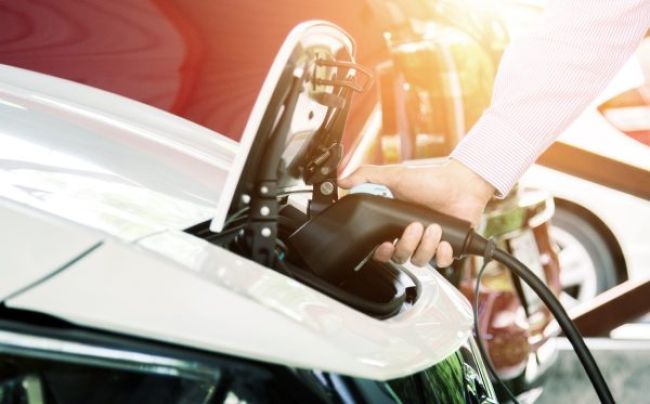
Retooling Your Shops for EVs
Electric vehicles have been rolling out in more and more utilities as fleets continuously strive to green up their operations. But making the transition from combustion to electric involves more than just getting operators on board. Among other things, it also means making sure shops and technicians are well-equipped to properly service these units.
According to Dave Broadwater, manager of fleet management services for Holman (www.holman.com), the methods by and pace at which organizations are embracing EVs vary greatly from fleet to fleet.
“Generally speaking, some fleet operators are rapidly implementing comprehensive electrification programs to align with their company’s overall sustainability initiatives, while others are merely exploring the feasibility of adding EVs to their fleet mix,” he said.
Whether you’ve decided to go all in or are evaluating your options, Broadwater recently shared some tips with UFP on how to ready your utility fleet and shop technicians for EVs.
A Safe Space
As fleet operators begin to integrate EVs into their fleet mix and prepare their in-house garages accordingly, safety should be the top priority.
“For technicians who are relatively unfamiliar with EVs, they can be extremely hazardous to work on compared to internal combustion engine units,” Broadwater said. “Without the proper training and safety equipment, an electric vehicle’s high-voltage powertrain presents significant risk, and if a technician or other employee comes in direct contact with the system, it can result in serious injury.”
Organizations should engage a wide range of stakeholders – including those from the fleet, operations and safety/risk departments – to ensure their facilities are designed with an emphasis on safety, he advised.
Adequate space and specialized tools are two important items to consider.
Fleet operators must ensure their facilities have adequate room to work on EVs; most OEMs recommend a 6- to 8-foot “safe zone” perimeter around a vehicle, according to Broadwater.
“This is intended to keep others clear of the area and avoid an inadvertent static charge near the high-voltage systems,” he explained.
Additionally, technicians will need specialized tools and personal protective equipment to safely handle high-voltage components.
“For example, your standard tools (e.g., wrenches, screwdrivers, pliers) should all be insulating to further reduce the risk of accidental electrocution,” Broadwater said. “Additionally, you’ll need a nonconductive object – with a minimum of 5 feet in length – specifically designed to dislodge someone from a high-voltage system in case of emergency. You’ll also need fire extinguishers as well as protective barriers to establish a safety perimeter.”
In terms of PPE, he advised that technicians should use rubber raincoat aprons, insulating boots, specialty high-voltage insulating rubber gloves and protective eyewear.
Ease Into It
Utilities should ensure the scope of their EV implementation aligns with fleet objectives.
“We often recommend beginning with an initial phase or portion of your fleet,” Broadwater said. “Then you can build on your success by applying the insight and knowledge you gain to other segments of your fleet, keeping in mind there will be some differences and nuances based on vehicle type, region, operating parameters and so forth.”
Because most EVs are still relatively new to the market and most OEMs offer little to no training on their complex and potentially hazardous systems, ensuring technicians are properly trained can be difficult.
“Technician training is perhaps the biggest challenge currently facing those who operate in-house repair facilities,” Broadwater said. “There are some third-party training programs available, but since the OEM technology is proprietary, this training often lags behind. Additionally, proprietary vehicle software can hinder the ability to complete repairs in-house.”
Fleets operators should also be mindful of cost considerations when preparing shops and technicians for EVs.
“Preventive maintenance in general tends to be slightly less on EVs as compared to equivalent ICE vehicles,” Broadwater said. “However, EVs do have some rather costly components that aren’t found in ICE vehicles: high-capacity batteries, specialized electrical components and so on. These items can be extremely costly to repair because often the unit has to go to an OEM facility for service. The good news is that most EVs come with a powertrain warranty similar to that of a typical ICE model, and fleet operators should take advantage of warranty coverage when available.”
Leverage the Experts
With the appropriate training and safety precautions, many fleet operators can conduct basic preventive maintenance and other non-powertrain EV repairs at their in-house garages. However, most fleet operators are likely best served by leveraging external maintenance partners (i.e., OEM facilities) to conduct any repairs that involve the vehicle’s high-voltage system.
“This is an area where it is extremely beneficial to partner with a fleet management provider who can assist you in developing an EV maintenance strategy that maximizes your internal resources and helps make your transition to EVs as seamless as possible,” Broadwater said. “In most scenarios, it is more efficient – both in terms of cost and time – to have your in-house technicians prioritize PM services for your EV units and other repairs for your ICE vehicles while allowing outside resources to handle specialized EV maintenance.”
About the Author: Grace Suizo has been covering the automotive fleet industry since 2007. She spent six years as an editor for five fleet publications and has written more than 100 articles geared toward both commercial and public sector fleets.

